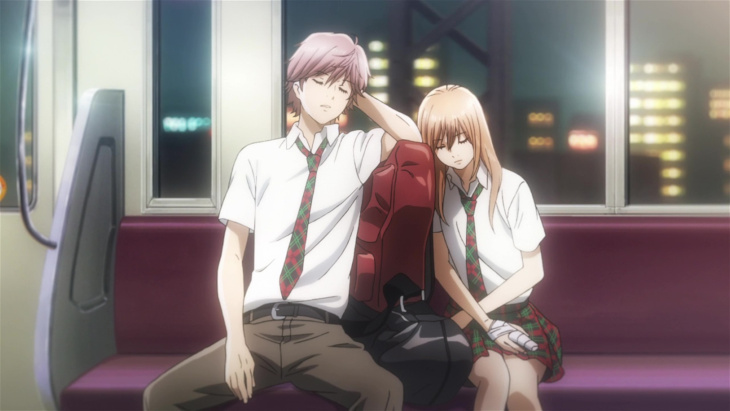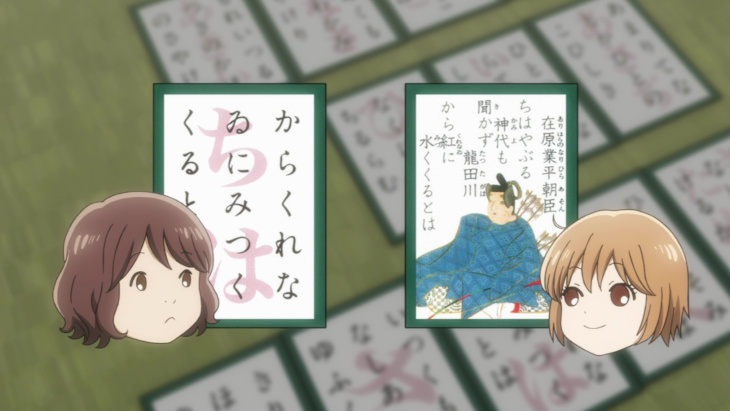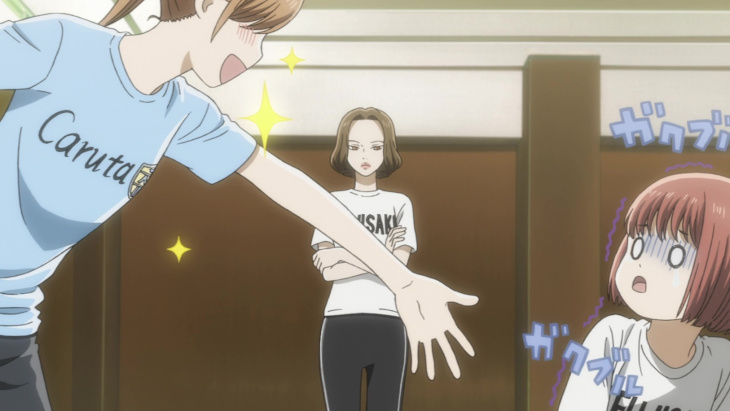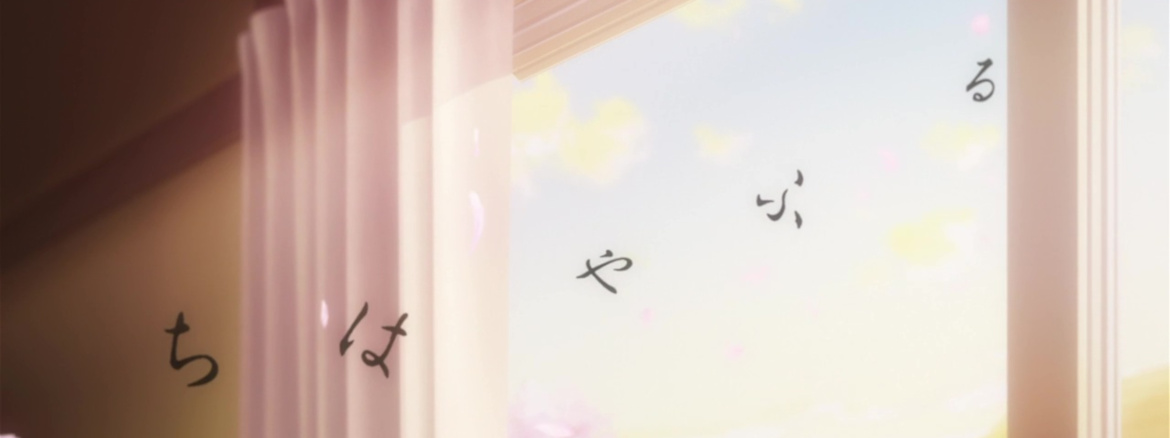
“I never give advice during a match, but just one thing… Maintain your posture. All Masters and Queens throughout history have had good posture. They’ve all had truly beautiful form.”
It’s been 6 years since the second season of Chihayafuru wrapped up. I was a big fan of the first two seasons, but even I have to admit that in that time I’ve succeeded in forgetting more than a few things about this series and its characters. This leaves the show facing something of a catch-22. It could attempt a broad rundown of all the events that have led up to where we are now, but that approach can lead to moderately disposable clip shows that end up feeling like disposable homework before the real plot comes back. Instead, the third season favors the idea of giving the viewer a brisk refresher on our main players before throwing us back into the chaotic world of Chihaya’s karuta. It’s still an awkward approach, but it serves as less of a narrative roadblock, and I can’t deny that I’m stoked to revisit these characters. The best sports anime out there is back, and I don’t care that it focuses on ancient Japanese poems! Chihayafuru is king!

The narrative is broken up into two parts. The first and shorter of the two parts is centered on Chihaya’s time in middle school as she attempts to introduce a friend to karuta. As a quick refresher of the rules and a basic overview of three of our key protagonists, it does its job, but the narrative sinew holding it together feels pretty thin, particularly when it tries to incorporate flashbacks to the previous two seasons. The majority of the episode is fixated on Chihaya and Taichi as they follow up on last season’s invitation to take part in Fujisaki High School’s Karuta Training Camp. From a purely narrative standpoint, this is a solid episode, and jumping straight into the training camp ensures that season 3 picks up right where 2 left off, but it may leave viewers who haven’t revisited the show in a while struggling to remember characters like Rion and Retro. This also means that the rest of our main cast get left by the wayside in this episode. Still, if one sets aside the disruptions caused by the 6-year pause, this is still a fun and engaging episode. With Chihaya having injured her finger in the previous season she’s left attempting to use her left hand to practice and is trying to further develop her sense of the game. It also allows her to engage with Rion who mirrors and contrasts Chihaya due to her lack of enthusiasm for the game but notable instincts and skills.

I’m pleased to say that Chihaya and Taichi aren’t the only ones who are back. Madhouse returned to produce the third season, and they have maintained the same level of polish and quality that characterized the first two seasons. It’s beautiful to behold, both in terms of the polished beauty of its moments of mellow poignancy and in its deftly implemented visual humor. It’s been eight years to the month since the first season premiered, but it’s a testament to Madhouse’s production quality that flashbacks from that original run feel right at home next to the new animation. There are some wonderful details over the course of this episode. The opening moment where Japanese hiragana flutter across the screen like cherry blossoms and it fades into the opening scene with the last 5 lingering characters spelling out the title was a personal favorite. One of the details that I will often judge a series on when reviewing it, is how easy it was to find good screenshots to use in the article. Black Clover took me ages to find decently or passably composed shots. This show took no time at all. I’d love to shove an extra half dozen images into this review, but I will restrain myself. Trust me though. Almost any random frame would work well. I tested this about 20 times, and the shot composition in this show is spectacular.
Before I wrap up, a few Notes and Nitpicks:
- I don’t think we got a proper opening in this episode in terms of visuals. It seemed that they intentionally used visuals from the first two seasons to try and refresh viewers. Amusingly, due to Madhouse’s standard quality it took me a while to realize that this was footage I’d seen before and not entirely new animation for the OP.
- Watari, as is usual, doesn’t have a physical presence in this episode. Obviously, he has a presence in Chihaya’s mind as a motivating factor, but, outside of the flashbacks, he doesn’t make a proper appearance.
- It’s amazing how much nostalgia the basic identifying chords of a background theme can evoke from a viewer.





Add comment